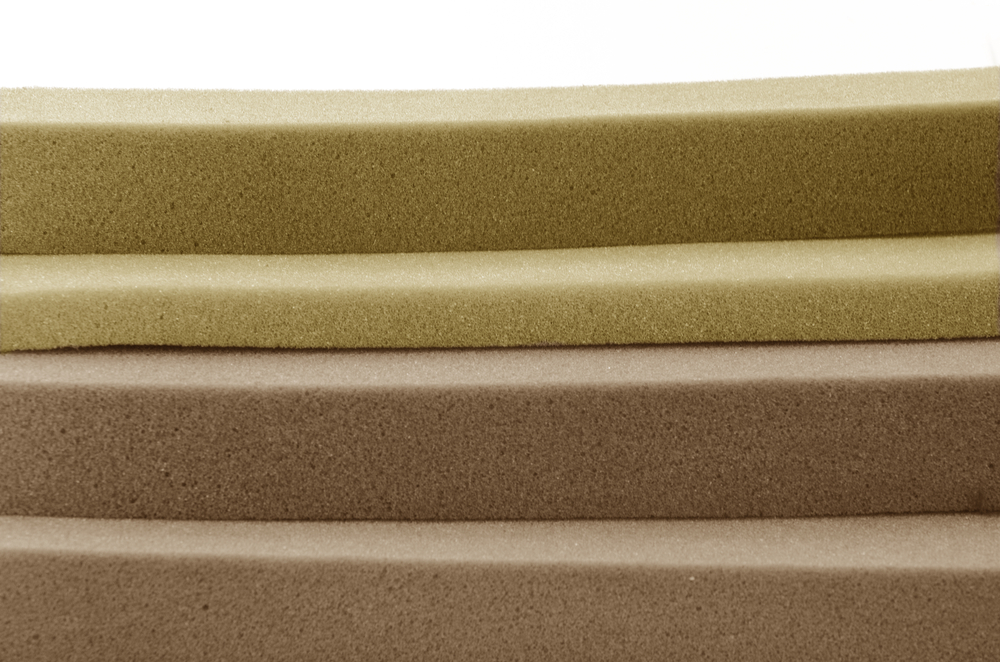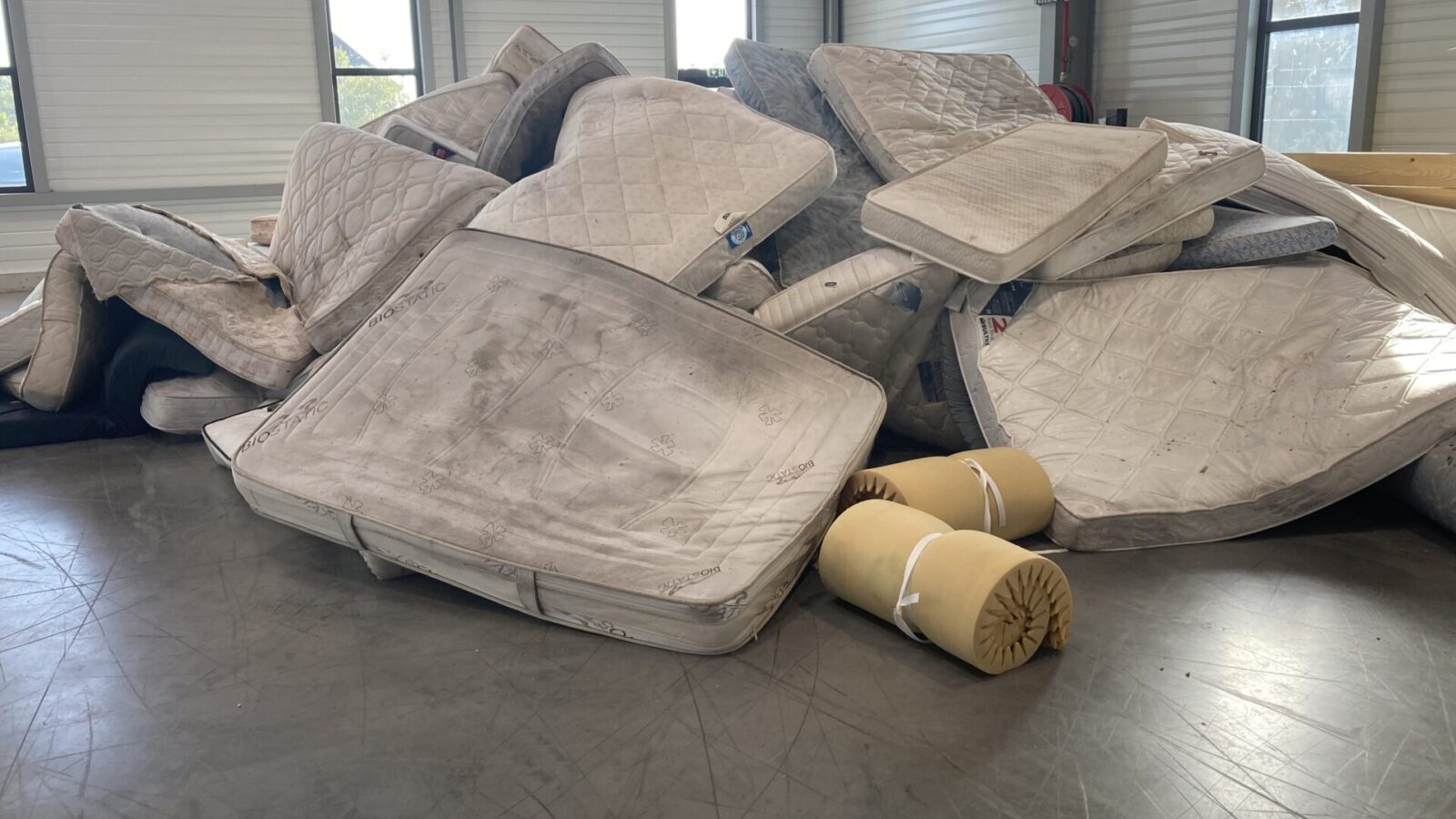Innovations pour la valorisation des matelas usagés : Ecomaison donne le rythme
En plus de douze ans, la façon de traiter les vieux matelas usagés s’est inversée. Alors que près de 100 % d’entre eux étaient enfouis en 2012, ce n’est plus le cas que pour quelques pourcents aujourd’hui. Un changement rendu possible par des progrès à tous les niveaux de la chaîne. Point d’étape d’une filière en constante évolution.
Collecte : le début d’une nouvelle vie
66 000 tonnes de matelas ont été collectées en 2022, soit 3,5 millions de matelas : un gisement de matière considérable ! En étroite collaboration avec les collectivités, il a donc fallu imaginer un réseau efficace de reprise, garantissant que les matelas usagés d’un territoire soient captés à la source.
En faisant de l’organisation de la reprise une obligation pour tous les metteurs sur le marché, la loi Anti-Gaspillage pour une Économie Circulaire (AGEC) de 2021 est venue renforcer et normaliser cette étape. Les fabricants et lieux de vente adhérents jouent aujourd’hui un grand rôle pour faciliter la collecte chez leurs clients, et ainsi assurer les derniers kilomètres jusqu’aux bennes Ecomaison. Un maillage dédié a été dessiné pour orienter ces bennes vers des lieux capables de les trier et démanteler.
Démantèlement : des matelas passés au peigne fin
Organiser le démantèlement des matelas a nécessité d’identifier les zones dans lesquelles il serait intéressant d’implanter une unité. Ces nouveaux lieux, qu’ils soient sortis de terre ou issus d’une conversion, demandent des équipements spécifiques.
Grâce à ses appels d’offre réguliers, Ecomaison a identifié des partenaires privés à même de composer ce réseau efficace de centres de préparation de literie.
Au sein de ces sept centres, répartis dans toute la France métropolitaine, les matelas préalablement regroupés dans des centres de tri sont orientés selon leur qualité, puis selon leur composition principale (ressorts ou mousses). Ensuite, ils sont décomposés pour permettre de récupérer leurs mousses, leurs ressorts le cas échéant, et les textiles utilisés pour leurs enveloppes.
Découvrez les coulisses du démantèlement de matelas
Mousses : retour vers le futur !

La réutilisation et le recyclage des mousses a largement progressé ces dix dernières années, permettant d’augmenter la part de réincorporation dans la fabrication de nouveaux produits.
Le recyclage mécanique permet de réduire les mousses récupérées en petits flocons, puis en mousses agglomérées par encollage de ces flocons. En revanche, ce mode opératoire a ses limites. Il ne permet pas, par exemple, d’obtenir des mousses de même qualité que les mousses d’origine. Ces mousses recyclées sont donc orientées vers des usages plus compatibles avec leurs qualités intrinsèques : isolants du bâtiment ou de l’automobile, sous-tapis, tapis de sport…
Parallèlement, de belles évolutions issues de l’innovation dans le domaine du recyclage chimique, permettent désormais de réintégrer la mousse récupérée dans le circuit de fabrication de matelas. En dépolymérisant les mousses récupérées, on parvient aujourd’hui à obtenir une matière première secondaire très proche de celle utilisée par les fabricants pour fabriquer les mousses initiales, donc directement intégrables dans leur chaîne. Si elle ne permet pas encore de se passer complètement de matière vierge pour fabriquer de nouveaux matelas, cette technologie est néanmoins une avancée majeure pour améliorer le cycle de valorisation des mousses de matelas.
Recyclage et éco-conception : les clés de l’innovation
Au rythme de ses appels à projet pour développer le recyclage et l’éco-conception, Ecomaison s’est allié à des partenaires variés pour faire bouger les lignes. Actuellement, l’un des axes majeurs de travail est la valorisation des textiles des enveloppes de matelas, appelées Coutils.
Ces textiles représentent encore une partie importante des matières récupérées lors du démantèlement. Un appel à projet passé a permis par exemple de développer avec Recyc’Matelas Europe un nouvel exutoire pour ces textiles mélangés. Cette avancée majeure, effective dès 2024, permettra de fabriquer un isolant pour le bâtiment par un recyclage mécanique de ces matières plutôt que de les destiner à servir de Combustible solide de récupération (CSR), comme aujourd’hui. Pour compléter cette première avancée, l’appel à projet Innovation et Recyclage lancé en 2023 a consacré un axe important aux innovations pour le recyclage du textile. Il offre aujourd’hui à de belles perspectives de développement.
Enfin, les appels à projets du programme Innovation for Ecodesign d’Ecomaison, soutiennent l’amélioration de l’éco-conception des matelas afin de les rendre plus recyclables.
Ces dix années de progrès à toutes les étapes de la chaîne témoignent du dynamisme de la filière et laissent augurer de nouvelles avancées majeures dans les années à venir.
